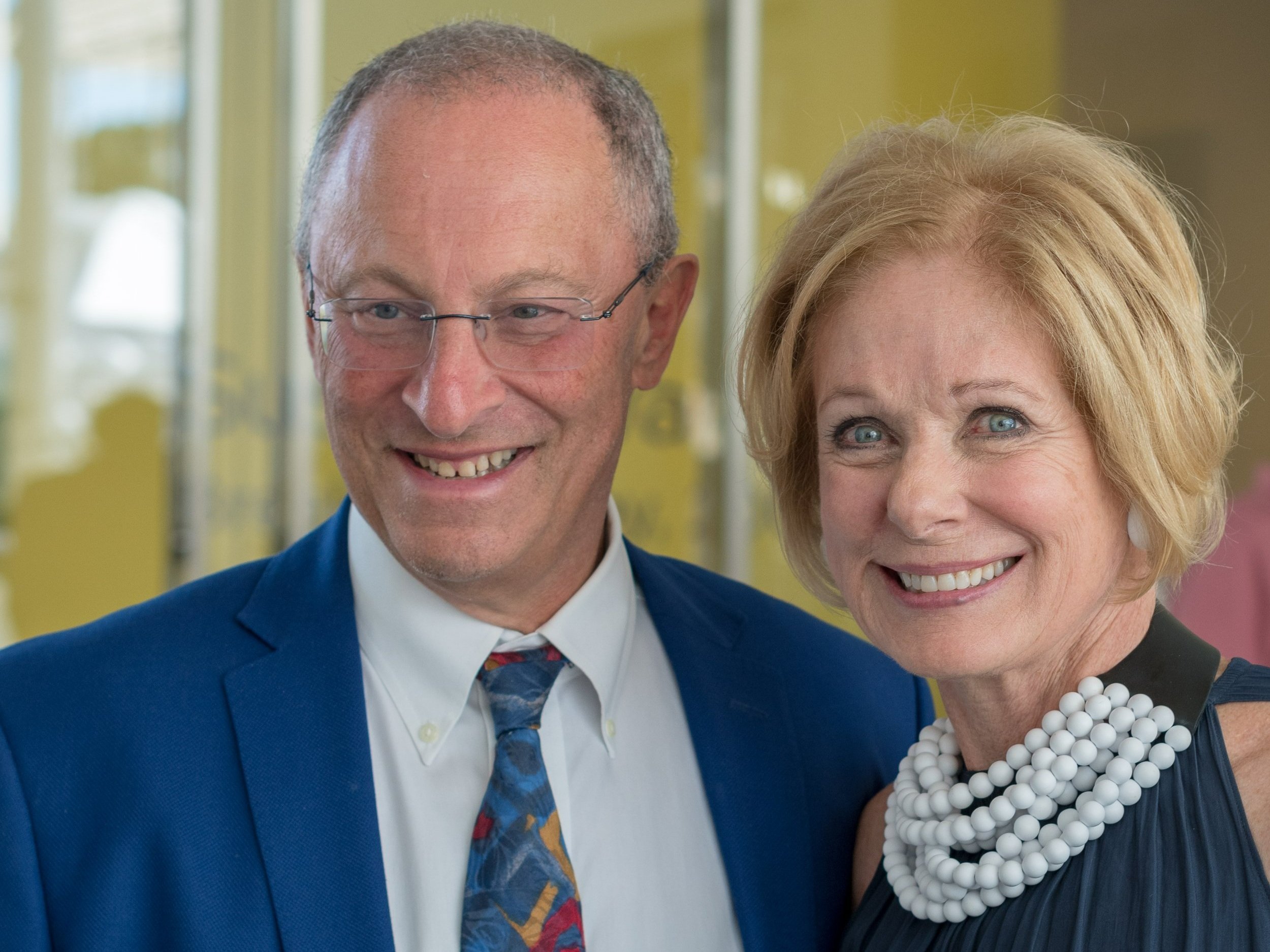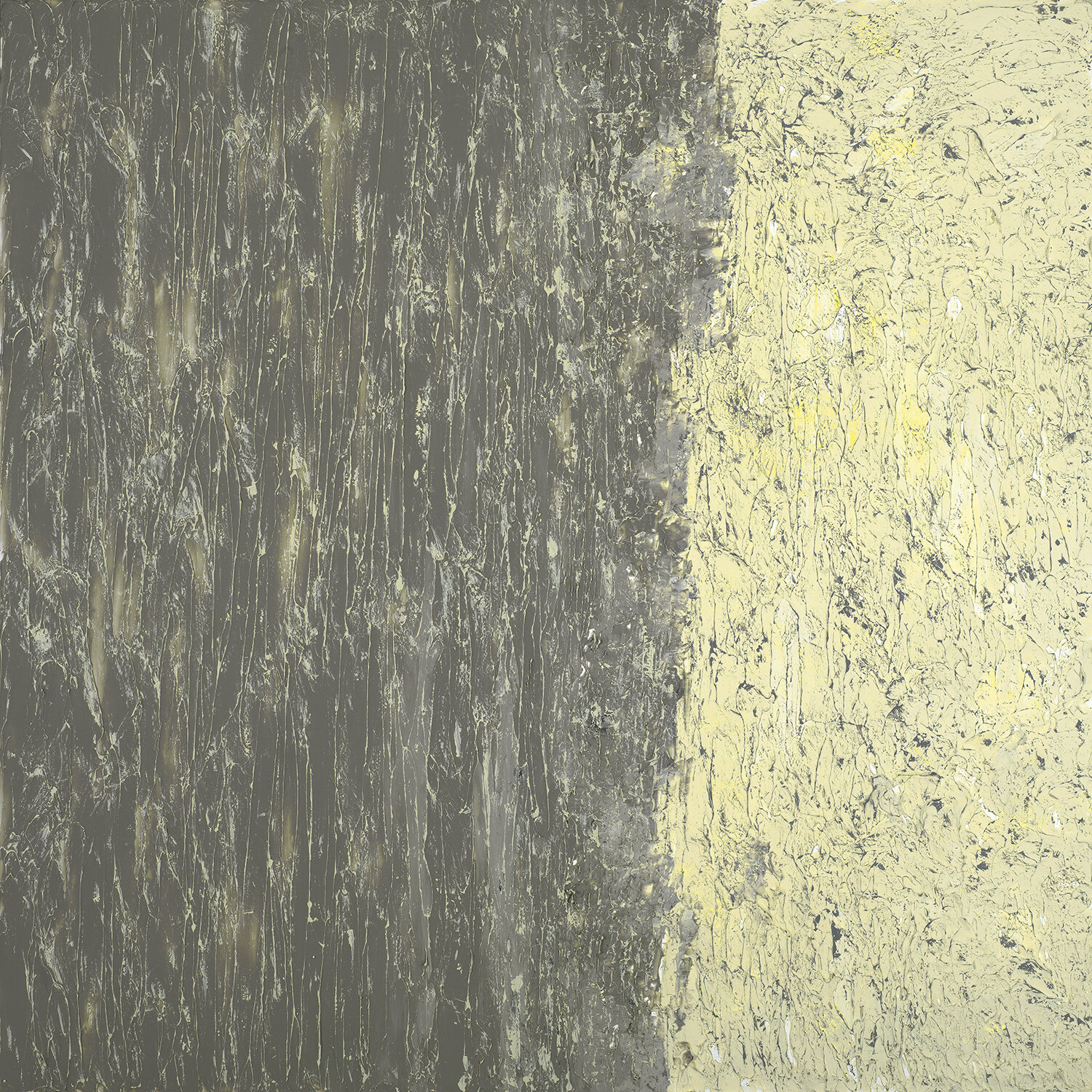Breaking Away, UC Davis
June 30 - September 2, 2018
Susan’s exhibition at the Jan Shrem and Maria Manetti Shrem Museum of Art was curated by Founding Director, Rachael Teagle in the summer of 2018.
“In her own words she is “breaking away” with a confidence that has only recently relocated from her heart into her agile hands.”
Museum founding donors Jan Shrem and Maria Manetti Shrem with Susan and Jim Swartz at the opening of Breaking Away.
Exhibition visitors view Preserving Grace.
Ralph Hexter, Provost and Executive Vice Chancellor of UC Davis; and Susan Swartz.
Panel discussion with Founding Director Rachel Teagle; Susan; Jessica Wimbley, Director of Museum Education; and artist Andrea Chung.
A foreward by Rachael Teagle:
Brightly colored ridges of paint, orchid and avocado colored lightning, crackle across the surface of Susan Swartz’s remarkable painting, Nature Revisited 44, 2018. From a distance the painting looks quite subtle, an accumulation of the palest of greens mixed into a field of creamy whites laid over multiple layers of paint. Everything changes, however, with a closer view that allows the veins of color to come into focus. These slight inflections spark the painting’s palpable energy. Alive, seemingly evolving in front of your eyes, Nature Revisited 44 introduces a new chapter in the artist’s work. In her own words she is “breaking away” with a confidence that has only recently relocated from her heart into her agile hands. Swartz dreamed of a life as a professional artist ever since a high school teacher recognized her talent. Her parents listened and she was the first in her family to attend university near her childhood home in Pittsburgh, PA. Trained in the academic tradition, Swartz started her career by making realistic landscape paintings. Close study of nature has always been her starting point; it was in college when she began to develop a personal approach to recording the appearance of things in the world.
Nature Revisited 44, Acrylic on linen, 42x84” 2018.
Like countless painters before her, Swartz is motivated by the grandeur of nature. Her art partakes in a long legacy of American landscape painting that dates back to the nineteenth-century Hudson River School. Dr. Dieter Ronte highlighted Swartz’s affiliation with this American approach to landscape in the catalogue that accompanied Swartz’s exhibition that toured Europe from 2015-17. “[Swartz’s] paintings,” he explained, “are full of romanticisms, full of longing, love and always in search of the familiar turned unfamiliar, of the psyche of the person in nature.”
One of the earliest paintings in this exhibition, Serenade of Lilies, 2007, exemplifies Swartz’s first steps towards a more “unfamiliar” relationship to nature. Its dynamics reverse the energy of Nature Revisited 44. Color is the first and most forceful experience of the painting. She mixed verdant greens of every hue from chartreuse to viridian. From a distance the greens coalesce into a leafy pond that is punctuated by white flowers that the artist laid down with fast, rough gestures .Multiple layers of paint accumulate into ridges that echo the form of leaves resting on water. Seen up close, however, any reference to nature dissolves and the painting becomes a riotous celebration of the materiality of paint.
Serenade of Lilies, Acrylic on linen, 72x72” 2007.
Serenade of Lilies opens this exhibition because Swartz recognizes the painting as a pivotal moment in her journey away from representation as an act of fidelity. This painting simultaneously depicts a recognizable subject as it also dissolves into an abstract play of color and material. She referenced the natural world, but her new goal was to evoke a feeling more than to depict a subject. This aspect of Swartz’s personal path parallels the progress of American painting in the twentieth century as it moved towards automatic painting of the New York School; in other words, an expression of the artists’ inner-vision. Artists on the west coast did not ascribe to such a rigorous approach. Teachers at the San Francisco Art Institute, such as Clyfford Still, championed abstraction but taught their students to begin by observing the natural world around them. Light, color, and simple forms found in nature were ready fodder for Still who painted in a radically abstract style with no obvious subject.
Swartz maintains this Californian tradition. John Buchanan, former Director of the Fine Arts Museums of San Francisco, summarized: “Yes, her work may well be seen as the contemporary continuum of that tradition that emerged in many countries, cultures and from early times forward. Yet, Susan’s paintings may be more aptly likened to “landscapes of the mind,” influenced as much by the imagination as by an actual site.” Swartz has spent the last ten years—the period this exhibition surveys—moving away from a direct connection to landscape towards a realm of feeling. Purple Majesty, a painting made one year after Serenade of Lilies, is another early example of the artist finding her way out of realism. She is clearly painting aspen trees at sunset, the state tree of Utah which is home to her current studio. And, she is searching for more. Her path towards an emotional connection, more than direct experience, is explored in the video the artist made in collaboration with cinematographer Louie Schwartzberg, on view in the adjacent gallery.
Purple Majesty, Acrylic on linen, 72x72” 2007.
Cloudburst, Acrylic on linen, 72x48” 2016.
“Early” work, such as Purple Majesty and Serenade of Lilies came relatively later in life, as the artist explains, “after years of painting in my head.” When she graduated from college Swartz immersed herself in the regional art scene. She exhibited her work frequently in local galleries and she launched her professional career with a job teaching art in high school. A passionate teacher, she integrated her students into the life of her young family and supported them with odd jobs. She taught while exhibiting her art. As time passed, however, Swartz realized that the men in her cohort were moving on to more prestigious venues, while women languished at the local level. Like many women artists before her, without advancement, Swartz made the decision to set aside her career to focus on the more immediate needs of her family.
Swartz began to paint again long after her children left home, and it took time to develop her voice. Serenade of Lilies, for example, came more than a decade after she developed a daily studio practice. The work has evolved yet again over the course of the last ten years.
Recently, Swartz has delved into a world of complete abstraction, but natural phenomena remain her touchstone. She was inspired to make Cloud Burst, 2016, for example, after watching a downpour. Variations in color, some minute, convey the emotion of rain, but unlike her earlier work, there is no representation of rain, only its feeling. In other works, such as her Breaking Away series, all from 2018, she is yet more distant from her source. These canvases express the artist’s freedom with paint, and a new sophistication that allows paint alone to carry all expressive intent in her work.
Breaking Away 9, Acrylic on linen, 72x72” 2018.
Breaking Away 8, Acrylic on linen, 72x72” 2018.
The most remarkable aspect of Swartz’s painting is how thoroughly her life story is present in the work. The artist survived a protracted and debilitating battle with Lyme disease. Her physical struggle registered in the art. For several years, painting at scale was difficult and specific gestures were too painful for her weakened muscles. Fatigue affected her ability to stand at the easel. Her recuperation was slow, but the incremental gain of stamina and agility is visible throughout the paintings in this exhibition. Her Breaking Away series, a recent culmination of previous much smaller experimental canvases, was painted with speed and facility.
It is, however, her Nature Revisited paintings, that bring a new synthesis to the artist’s work. Nature Revisited 44 celebrates health restored. The painting is thick with paint—the record of her application of multiple layers—a visible expression of her commitment to process. Darker, more intense colors remain visible in the painting’s murky depths. It is clear that she painted over something else. The painting is a palimpsest that weaves together the artist’s past as it announces the promise of a productive future. And, here, even at her most abstract, a relationship to nature surfaces in Swartz’ work. The outline of floral forms scatter across the painting’s surface. They are just shapes, an outline of the most basic form of a flower that coalesce in the ridges of paint as it lifts from the canvas. Life springs to the surface of the painting, and once again for Susan Swartz.








































